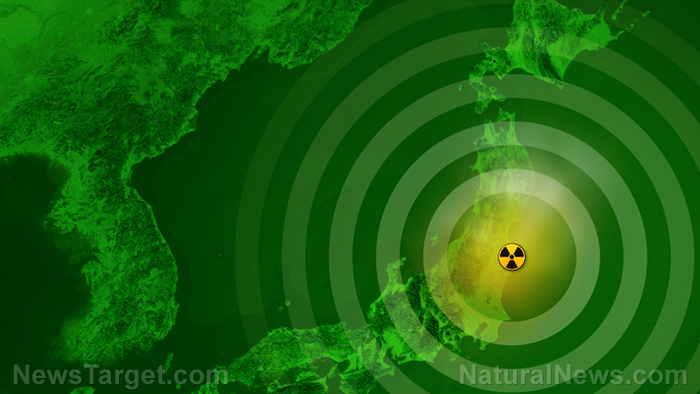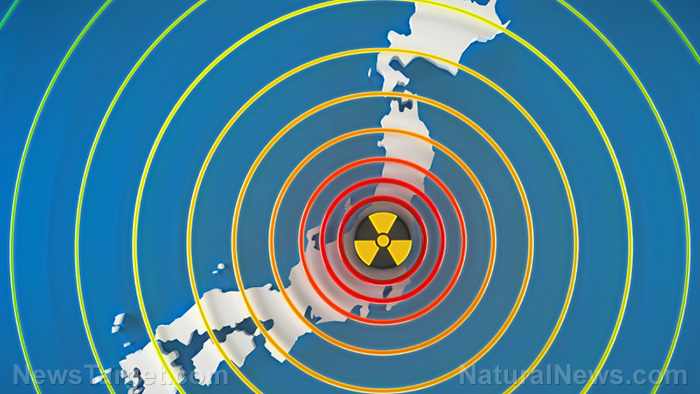Wild pig-boar hybrids take over closed-off Fukushima danger zone
07/07/2021 / By Ramon Tomey

The 2011 Fukushima nuclear disaster forced Japanese officials to seal off the area surrounding the Fukushima Daiichi Nuclear Power Plant. The resultant lack of human activity allowed wild pig-boar hybrids managed to thrive in the quarantine zone. Now, researchers who’ve returned to the isolated zone a decade after the catastrophe found that cross-breeding, not radiation, had a bigger effect on animals’ genes.
According to scientists, Japanese wild boars (Sus scrofa leucomystax) in the area bred with domestic pigs (S. scrofa domesticus) that escaped from abandoned farms in the quarantine zone. They discovered after further analysis that the domestic pig genes had gradually been “diluted” over time.
Fukushima University researcher Donovan Anderson told the BBC: “While the radiation [in Fukushima] hasn’t caused a genetic effect, the invasive domestic pig species has.” He pointed out that while domestic pics would be unlikely to survive in the wild, mating with the hardy wild boar could produce offspring able to do so. “I think the pigs were not able to survive in the wild, but the boar thrived in the abandoned towns – because they’re so robust,” Anderson said.
The 2011 Tohoku earthquake claimed the lives of tens of thousands of people and brought about massive economic damage. It also triggered a tsunami that flooded the reactors at the nuclear plant. This subsequently caused a meltdown in the plant, akin to the Chernobyl incident in 1986.
Japanese authorities evacuated entire populations in Fukushima towns that surrounded the eponymous power plant. They also established a permanent exclusion zone at the area surrounding the nuclear plant – allowing different flora and fauna to flourish.
Researchers have pointed out that since the original domesticated pigs have died out, the natural situation in Fukushima’s quarantined area prior to human occupation is returning. Fukushima University professor Shingo Kaneko said: “Those invasive genes are disappearing, and the natural situation is coming back.” (Related: Fish off the coast of Fukushima show high concentrations of radioactive cesium.)
The return of humans threaten the pig-boar hybrids
Since 2018, people have started to move back into previously abandoned areas near the Fukushima plant. This has threatened the pig-boar hybrids as a consequence. “Humans are really the only predators for these wild [boars.] So as people come back, it’ll be really interesting to see what [they] do,” Anderson said.
But the pig-boar hybrids in some areas may be able to thrive further, given that many erstwhile Fukushima residents were still reluctant to return to their old homes. A March 2021 Bloomberg report said large portions of the prefecture remain abandoned a decade after the earthquake ten years earlier. While the Japanese government allocated billions of dollars to rebuild and decontaminate affected areas, it failed to convince old Fukushima residents to go back.
The report said Fukushima prefecture saw a 10 percent drop in its population in the past decade. This amounted to four times more than that of the neighboring Miyagi prefecture, which only saw a 2.5 percent drop during the same period.
A number of towns in Fukushima have acknowledged that things will not go back to the way they were before the earthquake and nuclear disaster even though they were rebuilt. One such town is Namie, located north of Okuma town where the nuclear disaster occurred.
Namie’s 21,000 residents were forced to evacuate after prevailing winds spread radiation from the Fukushima Daiichi Nuclear Power Plant. Part of the town was reopened in 2017 to allow former residents to return. However, only about 1,600 people – less than 10 percent of the town’s original population – have moved back since then. Namie erected a stone monument listing 200 residents who died in the tsunami.
Fifty-three-year-old Hidehiro Asada returned to Namie to restart his family’s lumber business. He has now employed 21 people, slightly lower than the 30 employees at the time of the disaster. He told Bloomberg that the lack of employment opportunities in Namie made recovery efforts difficult. (Related: Fukushima residents being forced to move back to radioactive wasteland.)
“Even if they come back, there aren’t any jobs. Retired people will come back, but young people have found work and put down roots where they are. So they won’t come back easily,” Asada said.
Visit Fukushima.news to read more articles about life in the Fukushima prefecture years after the nuclear disaster.
Sources include:
Tagged Under: cross-breeding, domestic pigs, Fukushima, Fukushima Daiichi nuclear power plant, human activity, Japanese wild boars, nuclear meltdown, nuclear radiation, permanent exclusion zone, pig-boar hybrids, reactor cores, recovery efforts, Tohoku earthquake
RECENT NEWS & ARTICLES
COPYRIGHT © 2017 FUKUSHIMA NEWS



















